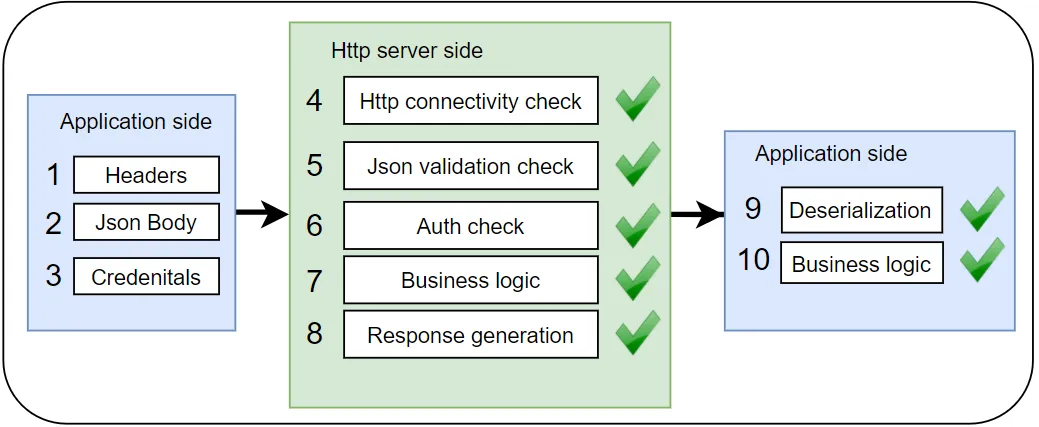Mocking Test Methodology
The key idea of mocking is to replace real code (e.g. calls to a database or service) with artificial functionality that has the same return type. There are different approaches in this practice. Here, I explain best practices and why it might be better to avoid mocking in order to have real code quality.
User Service - Example to Be Tested With Mocks
Let’s write simple application that fetch users from http service.
Java
public Optional<User> createUser(String name) {
try {
//Preparation of request: auth, body and media type of request
HttpHeaders headers = new HttpHeaders();
headers.setContentType(APPLICATION_JSON);
headers.set("auth", "mySecretKey");
//Specifying body
HttpEntity<String> request =
new HttpEntity<String>("{\"name\":" + name + "}", headers)
//Making request with and deserializing response into User object
User newUser = (new RestTemplate()).postForEntity("/server/users", request, User.class).getBody();
newUser.setIssueDate(Date.now());
return Optional.of(newUser);
} catch (Exception e) {
System.out.println("Something went wrong! : " + e.getMessage());
Return Optional.empty();
}
}
@Data
class User {
private Integer id;
private String name;
private Date issueDate;
}
Implementation Details
The method, createUser, basically does 4 things:
- Preparation of request: authentication, preparing body and media type of request (line 4-5 corresponding to 1, 2, 3 step on the diagram.
- Making request to server with given url (line 11 or step 4).
- Receiving the response and deserializing it into an object. (line 11- yes the same line! and step 9 on diagram).
- Setting the current date to created user (line 12, or step 10).
The remaining actions are done on server-side and hidden from application:
1. Server check that body has json type and correct auth key (step 5,6).
2. Make business logic (create a user) (step 7).
3. Generate response with new user id (step 8).

#performance #testing #spring #mockito #powermock #mock #http server #http testing

1.35 GEEK